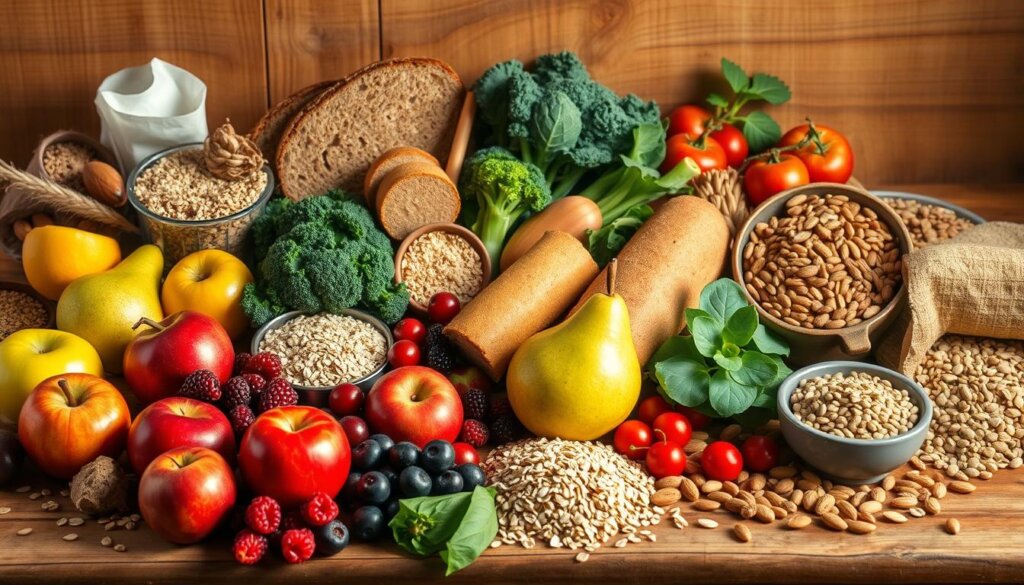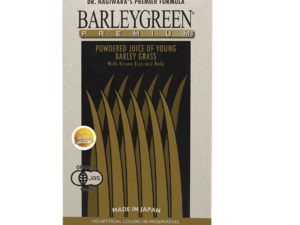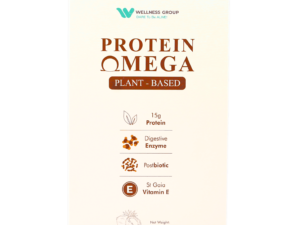Globally, over 90% of adults fall short on daily fiber intake. In the U.S., the average person gets just 16 grams – far below the 25-30 grams experts recommend. This gap isn’t just a number: it’s linked to digestive issues, energy slumps, and long-term health risks.
Wellness Group simplifies smart nutritional choices. Their team transforms complex science into actionable steps, helping people bridge this fiber deficit through everyday foods. Forget confusing charts or strict diets – practical solutions exist.
Why does this matter? Fiber supports gut bacteria, stabilizes blood sugar, and keeps hunger in check. Yet many struggle to identify the right source or balance different types. That’s where expertise makes all the difference.
Key Takeaways
- Global fiber intake averages 40-60% below recommended levels
- Proper fiber consumption reduces chronic disease risks
- Simple food swaps can close nutritional gaps effectively
- Both soluble and insoluble fibers play distinct health roles
- Expert guidance eliminates guesswork in meal planning
Wellness Group’s approach focuses on sustainability, not restriction. Discover how small changes – like choosing specific grains or legumes – create lasting wellness improvements. The journey to better health starts with understanding which fibers deliver maximum benefits for your lifestyle.
Introduction to Fiber: A Health Essential

Click to LEARN MORE
Your body thrives when fueled properly, and dietary fiber acts like a silent partner in this process. Found exclusively in plant-based foods, this nutrient works behind the scenes to support digestion, heart health, and energy regulation.
Role of Fiber in a Balanced Diet
Fiber plays two critical roles: it feeds beneficial gut bacteria and helps manage hunger signals. Unlike other nutrients, it passes through the digestive system mostly intact, creating a cleansing effect. Many people experience bloating or irregularity when their intake falls short of daily needs.
Understanding Soluble and Insoluble Fiber
Soluble fiber forms a gel-like substance when mixed with water. Found in oats and apples, it slows sugar absorption and helps manage cholesterol. A bowl of lentil soup provides both types, but its soluble content specifically supports blood sugar stability.
Insoluble fiber adds bulk to stool, acting like nature’s scrub brush for intestines. Whole grains and carrot skins contain this type, which promotes regular bowel movements. Together, these fibers create a balanced system – one softens while the other sweeps.
Wellness Group simplifies this science through practical food pairings. Combining chia seeds (soluble) with brown rice (insoluble) makes meals both satisfying and functional. This approach turns everyday eating into strategic health support.
What is the best fibre to eat?

Smart fiber choices pack a nutritional punch beyond basic digestion support. Lentils deliver 7.8 grams per cooked cup alongside plant-based protein, while oats provide 10.4 grams per 100g with heart-friendly beta-glucans. These foods work double duty – meeting fiber goals while supplying essential nutrients.
Avocados stand out with 10 grams per medium fruit, plus healthy fats that enhance nutrient absorption. Split peas offer 8.2 grams per half-cup alongside iron and potassium. Wellness Group prioritizes these multitasking sources because they maximize health impact per bite.
Consider these powerhouses for daily meals:
- Chia seeds (10g per ounce) – mix into yogurt or smoothies
- Broccoli (5g per cup) – roast with olive oil for flavor
- Dark chocolate (70%+, 3g per ounce) – pair with almonds
The health benefits multiply when fiber-rich picks also contain antioxidants or anti-inflammatory compounds. Cruciferous vegetables like Brussels sprouts offer both insoluble fiber and cancer-fighting sulforaphane. Strawberries provide 3 grams per cup plus vitamin C for immune support.
Wellness Group’s meal plans focus on strategic combinations – chia pudding with raspberries, or lentil curry with brown rice. This approach ensures adequate amount while enhancing overall diet quality. Simple swaps create lasting benefits without drastic lifestyle changes.
High Fiber Fruits for Daily Nutrition
Fruits aren’t just nature’s candy—they’re fiber powerhouses in disguise. With vibrant colors and natural sweetness, these options make boosting intake feel effortless. Wellness Group recommends focusing on varieties that deliver both flavor and functional benefits.
Top Fiber-Rich Fruits: Pears, Apples, and Raspberries
A medium pear with skin provides 2.9g fiber—about half the daily value from one juicy snack. Apples follow closely, offering 3-4g per fruit when consumed unpeeled. For berry lovers, raspberries pack 3.3g per cup alongside immune-boosting vitamins.
Three simple ways to enjoy these superstars:
- Layer sliced pears into morning oatmeal
- Dip apple wedges in almond butter
- Mix raspberries into chia seed pudding
Exploring Avocado and Bananas as Nutritious Options
Avocados surprise many with 10g fiber per fruit—more than most grains. Their creamy texture works in smoothies or whole-grain toast toppings. While bananas offer modest fiber (1.1g per half fruit), they pair perfectly with high-fiber cereals.

Click to LEARN MORE
Wellness Group suggests combining these fruits with protein sources for balanced snacks. Try avocado slices on rye crackers or banana coins over Greek yogurt. Small tweaks create meals that satisfy hunger and support digestion simultaneously.
High Fiber Vegetables for Heart Health
Vegetables serve as nature’s allies for cardiovascular wellness, packing fiber and protective nutrients in every bite. Their vibrant colors signal an abundance of compounds that support blood flow, arterial health, and cholesterol balance.
Cruciferous Vegetables: Broccoli and Brussels Sprouts
Broccoli delivers 2.5g of fiber per half cup cooked, while Brussels sprouts offer 6.4g per cooked cup. These vegetables contain sulforaphane, a compound that helps manage cholesterol levels. Steaming preserves their nutrients better than boiling.
Try these easy prep ideas:
- Toss roasted Brussels sprouts with olive oil and garlic
- Stir-fry broccoli with ginger and sesame seeds
- Add shredded raw sprouts to salads for crunch
Root Vegetables: Carrots, Beets, and Sweet Potatoes
One cooked sweet potato provides 6.4g fiber per cup – more than many grains. Carrots and beets add 2-3g per serving while supplying antioxidants like beta-carotene. Roasting caramelizes their natural sugars, making them crowd-pleasers.
Wellness Group recommends pairing these vegetables with healthy fats. Drizzle roasted carrots with tahini or top baked sweet potatoes with Greek yogurt. These combinations enhance nutrient absorption while supporting heart health through balanced meals.
Legumes and Whole Grains: Fiber Powerhouses
Plant-based diets gain strength from humble kitchen staples – legumes and whole grains. These affordable ingredients deliver dual benefits, packing both fiber and protein into every spoonful. For Malaysian households, they offer budget-friendly solutions to modern nutritional gaps.
Beans, Lentils, and Chickpeas for Daily Fiber
Half a cup of cooked lentils serves up 7.8g fiber – nearly a third of daily needs. Chickpeas follow closely with 6.2g, perfect for curries or blended into hummus. Kidney beans add 5.7g per serving while contributing iron for energy production.
Three simple ways to enjoy legumes:
- Stir red lentils into coconut-based soups
- Mix chickpeas into nasi kerabu for extra crunch
- Blend black beans into burger patties
These protein sources shine in lowering LDL cholesterol when consumed regularly. Soaking dried legumes overnight cuts cooking time, while canned versions offer weekday convenience.
Quinoa and Oats: Versatile and Nutritious Choices
Rolled oats deliver 10.4g fiber per 100g – ideal for breakfast bubur. Quinoa provides 8g per cooked cup, making it a rice alternative with complete protein. Both grains stabilize energy levels better than refined options.
Try these Malaysian-friendly swaps:
- Use quinoa in place of white rice for nasi lemak
- Add oats to kuih bakar batter for fiber boost
- Mix both into yogurt with local fruits
Whole grain bread made with oat flour offers 3-4g fiber per slice. Pair it with lentil spread for a meal that satisfies hunger and nutritional needs simultaneously.
Other Nutrient-Dense Fiber-Rich Foods
Snacking gets a nutritional upgrade with fiber-packed options that double as flavor powerhouses. Beyond main meals, smart choices can transform quick bites into opportunities for wellness support. 
Nuts, Seeds, and Dark Chocolate as Healthy Snacks
Almonds deliver 3.5g fiber per ounce alongside healthy fats and magnesium. Chia seeds pack 4.1g per tablespoon – mix them into overnight oats or sprinkle over rojak for crunch. These seeds absorb liquid, creating satisfying textures while boosting mineral intake.
| Food | Serving Size | Fiber (g) | Key Nutrients |
|---|---|---|---|
| Almonds | 1 ounce | 3.5 | Vitamin E, Magnesium |
| Chia Seeds | 1 tablespoon | 4.1 | Omega-3s, Calcium |
| Dark Chocolate (85%) | 1 ounce | 3.1 | Iron, Antioxidants |
| Air-Popped Popcorn | 3 cups | 5.8 | Polyphenols |
Dark chocolate becomes a source of fiber when choosing 70%+ cocoa varieties. Pair two squares with walnuts for a treat containing 4g fiber and heart-healthy compounds. Portion control matters – a small handful of nuts or 30g chocolate balances satisfaction with nutrition goals.
Wellness Group recommends these ways to enjoy fiber-rich snacks:
- Stir pumpkin seeds into teh tarik oats
- Top apam balik with crushed almonds
- Mix cocoa nibs into trail mix with dried mango
These portable options fit Malaysian lifestyles perfectly. Keep roasted seeds in office drawers or blend flaxseeds into ais kacang for hidden nutrition boosts. Small additions create big impacts over time.
How Fiber Supports Digestion and Cholesterol Management
Fiber operates like a skilled mechanic in the body, fine-tuning multiple systems simultaneously. Its dual action on gut function and metabolic processes makes it essential for maintaining balance. Wellness Group’s nutrition strategies leverage these mechanisms through targeted food recommendations.
Improving Gut Health Through Dietary Fiber
Insoluble fiber adds bulk to stool, preventing constipation by speeding waste removal. This reduces strain during bowel movements, lowering risks of hemorrhoids. Soluble types feed beneficial gut bacteria, creating compounds that protect intestinal health.
Regular fiber intake maintains gut lining integrity. This helps prevent diverticular disease and supports immune function. Simple swaps like choosing whole grains over refined versions enhance daily digestion effortlessly.
Managing Cholesterol and Blood Sugar Levels
Soluble fiber binds to bile acids rich in cholesterol, escorting them out of the body. This process forces the liver to use circulating blood cholesterol for new bile production. Oats and barley excel at this cholesterol-lifting action.
Fiber’s gel-like texture slows carbohydrate breakdown, stabilizing blood sugar levels. For those monitoring glucose, this means fewer energy crashes. Pairing high-fiber foods with proteins creates meals that sustain energy without spikes.
Wellness Group translates these science-backed benefits into practical meal plans. Their approach helps Malaysians address health priorities through informed food choices – no guesswork required.
FAQ
How does soluble fiber differ from insoluble fiber?
Soluble fiber dissolves in water, forming a gel-like substance that helps lower cholesterol and stabilize blood sugar. Insoluble fiber adds bulk to stool, aiding digestion and preventing constipation. Both types are essential for overall health.
Which fruits offer the highest fiber content?
Pears, apples, and raspberries are excellent choices, providing 4–8 grams per serving. Avocados and bananas also deliver fiber alongside heart-healthy fats, potassium, and vitamins for balanced nutrition.
What vegetables support heart health through fiber?
Broccoli and Brussels sprouts are rich in soluble fiber and antioxidants. Carrots, beets, and sweet potatoes add variety while promoting healthy cholesterol levels and steady blood sugar management.
Can legumes and whole grains meet daily fiber needs?
Yes! A half-cup of lentils or black beans provides 7–8 grams of fiber. Oats and quinoa offer 4–5 grams per cooked cup, along with protein and minerals like iron and magnesium.
Are there tasty snack options high in fiber?
Almonds, chia seeds, and dark chocolate (70%+ cocoa) make satisfying snacks. Pair them with fruits or yogurt for added vitamins and minerals without excess sugar or unhealthy fats.
How does fiber improve gut health and cholesterol?
Insoluble fiber feeds beneficial gut bacteria, enhancing digestion. Soluble fiber binds to LDL cholesterol in the bloodstream, helping remove it and reducing risks of heart disease over time.






